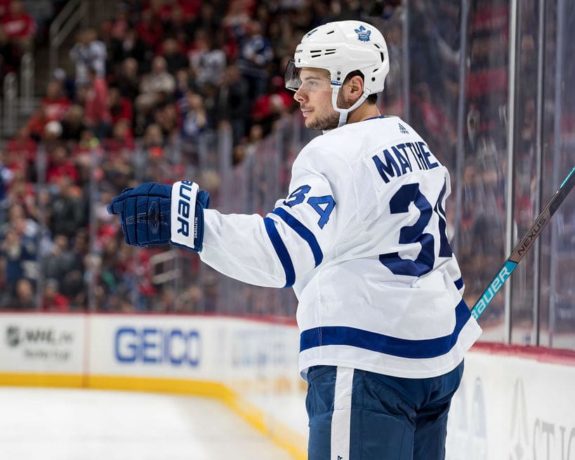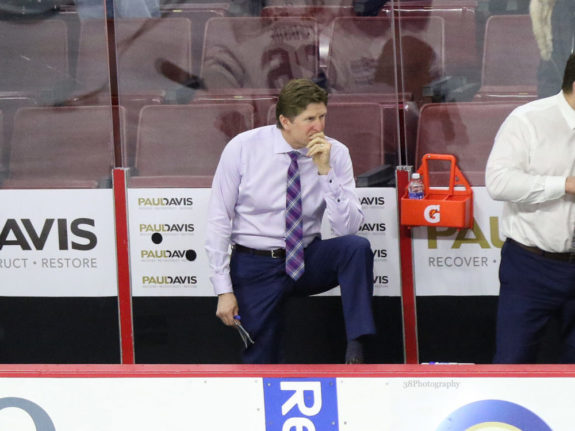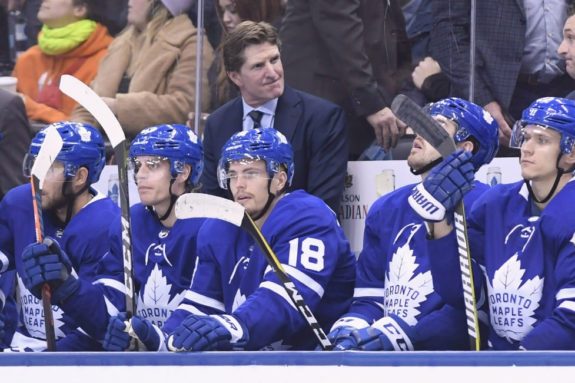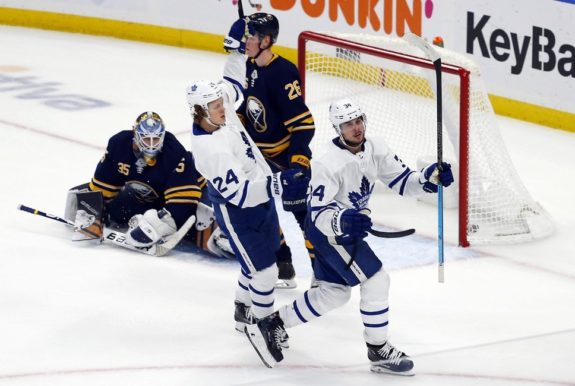In early August, The Hockey News’ Matt Larkin posted a snippet from an upcoming article that quoted Toronto Maple Leafs head coach Mike Babcock on franchise centre Auston Matthews’ expected increase in ice time:
At face value, it seems like a good thing, but when you look at Matthews’ average time on ice for the 2018-19 season, based on what Babcock said, 19 minutes a night isn’t that much of an increase. To say that Matthews is capable of handling 19 minutes is an understatement. He can handle more than that and keep up with other elite centres in the league.
Comparing to Other Top Centres
Matthews has dealt with minimal ice time for the first three seasons of his NHL career. I can understand sheltering him as a rookie, or even as a sophomore, but with his skillset and ability to be an offensive threat, there’s no reason for him to be getting the low end of the stick.

Let’s use McDavid’s time on ice as a comparison. I’m not comparing their style of play, but both are franchise players.
| Year | Matthews’ AVG TOI | Matthews’ PP TOI/ G | McDavid’s AVG TOI | McDavid’s PP TOI/ G |
| 2016-17 | 17:38 | 2:27 | 21:08 | 3:02 |
| 2017-18 | 18:08 | 2:09 | 21:33 | 2:58 |
| 2018-19 | 18:33 | 2:34 | 22:50 | 3:25 |
McDavid had 18:53 in his rookie season, over a minute more than Matthews in his. McDavid saw his ice time shoot up to 21 minutes a night in the next two seasons while getting another increase to 22:50 in his fourth. Granted, McDavid has one more year of experience than Matthews, but the fact is, every season his ice time jumped. On the power play, Matthews has averaged over two minutes, which is pretty good, but McDavid has averaged around three minutes a game. Matthews is still struggling to gain ice time, even though he’s a major offensive producer.
Matthews played 20 minutes in 19 of 68 games in 2018-19, which comes up to 28%. Seven of those games were 21 minutes or more, about 10.3%. There were only nine games last season when McDavid didn’t crack 20 minutes.

Overall, Matthews ranked 38th overall in average ice time among centres and 19th overall at even strength. Knowing the caliber of player Matthews is, that’s discouraging. Dylan Larkn (Detroit Red Wings), Jack Eichel (Buffalo Sabres), Mika Zibanejad (New York Rangers) and Bo Horvat (Vancouver Canucks) all average 20 minutes a game. Though they’re really great players, their teams missed the playoffs.
The Maple Leafs are a Stanley Cup contender. If other teams have clued in to playing their top centres, why hasn’t Babcock done this with Matthews? You could say that, because he has John Tavares, he needs to balance the lineup. That’s fair, but he could play both Tavares and Matthews 20 minutes a game without affecting the rest of the lineup.
Previous “Rifts”
This isn’t the first time that there has been controversy between the head coach and the Leafs’ franchise player. After another blown series lead against the Boston Bruins in the 2018 Playoffs, there was a rift between the two and Babcock had to fly out to Arizona to chat with Matthews.
Fast forward to the 2019 Stanley Cup Playoffs. Matthews was a key contributor, scoring when it mattered the most. Although he was doing a lot in Game 7, he only had 18:48 total ice time and was on the bench for most of the third period. The team’s franchise player was on the ice for less than 20 minutes in a critical game.

You can understand why many are quick to judge Babcock’s decision-making and player deployment. In order to win, he should have shortened his bench and played his best players.
From “losing” his star player one year, to barely playing him in the last period of a Game 7 is troubling. He’s stuck in the past where the vets should be out there playing while the young guys take a seat. That’s not how the NHL is being played today. The stars deserve more ice time. While the depth players have a purpose, they shouldn’t be relied on to win a game. With Matthews entering his fourth season, to increase one of your top player’s ice time by only a minute is not ideal.

After watching the Toronto Marlies win the Calder Cup in 2018 and make it to the Conference Final last season, I noticed that the best players were being played at key moments no matter what the situation was. Marlies head coach, Sheldon Keefe, knows that he can get the most out of his best players. Babcock should as well.
Babcock Has to Have Faith in Matthews
Matthews is about to start the first of a five-year deal. The best time to win a championship is now, when all of the Maple Leafs’ star players are locked up. This may be the team’s only time to win before another roster shakeup. There needs to be more faith from the coach towards his franchise player.
Even former CBC news anchor Peter Mansbridge gave a glaring critique of what Toronto Raptors head coach Nick Nurse did right and what Babcock needs to do.
Mansbridge has a point. We saw Nurse ride the waves with players like Kawhi Leonard, Kyle Lowry and Pascal Siakam consistently en route to the Raptors’ first ever NBA championship, which was Canada’s first as well. Why is Babcock so reluctant to do this?
Matthews played 19:47 in the playoffs last season, a jump up from his 17:32 the previous year. In 2007-08, when Babcock was still the head coach of the Detroit Red Wings, his top two centres, Henrik Zetterberg and Pavel Datsyuk, averaged over 21 minutes a game. While that was a veteran team, both were in their fifth and sixth seasons, respectively. Babcock wasn’t hesitant to give his players the ice time they deserve.

Babcock has relied on his star players before; it’s now time for him to do that again. That starts with giving Matthews more time than just 19 minutes a night. I understand that Babcock likes to balance his lines, but there comes a time where you need to play your best players more often. Matthews is a consistent threat on the ice and he’s earned the right to gain more opportunities. He has stamina to be able to play 21, 22 or even 23 minutes a night. It’s up to Babcock to make that decision.
Ice time numbers form hockey-reference.com and NHL.com